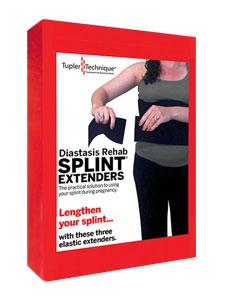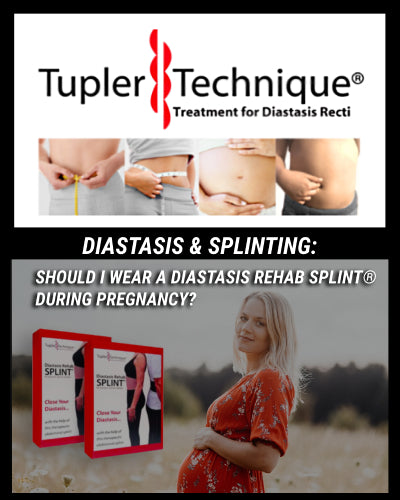Abdominal Separation During Pregnancy
In my experience of checking pregnant women from 1990 to the present, only a small percentage of women do not get a diastasis. Women that do the Tupler Technique® early in pregnancy can prevent themselves from getting one.
Abdominal separation or diastasis recti during pregnancy exposes a pregnant woman at greater risk for a C-section. A weak connective tissue cannot support a top-heavy uterus. The top of the uterus then tilts forward. This forward tilt makes the cervix face sideways instead of vertically. The cervix must be lined up with the vaginal canal in order to provide a path for the baby to come out.
The research & evidenced based Tupler Technique® Program is crucial for pregnant women as this program can make the diastasis smaller during pregnancy. This program also teaches pregnant women how to push correctly in labor to prevent pelvic floor problems as well as making your diastasis larger. A larger diastasis puts you at risk for back pain during and after pregnancy.
Diastasis Recti [abdominal separation ] Splint During Pregnancy

Many people ask me about wearing the Diastasis Rehab Splint® during pregnancy. This is perfectly fine if a pregnant woman is comfortable wearing it! If she is not comfortable wearing it, then she can just hold a splint (scarf or arms of sweater) while doing the seated and back lying abdominal exercise as well as while pushing in labor.
The sizing is tricky though because you will need a larger size as your belly gets bigger. We recommend getting one size larger and then putting a hem in the arms of the splint. Then letting them out as you get larger.
Keeping your diastasis as small as possible during pregnancy is crucial to prevent back problems during and after pregnancy and to make your pushing more effective in labor. If the uterus is being supported by the thin connective tissue (instead of the abdominal muscles if they were close together) the already top heavy uterus will tip over putting the cervix out of alignment with the vaginal canal making pushing in labor very difficult.
Lyndsey Halik is one of my licensed Tupler Technique® Providers in Ferndale Washington. She is pregnant with her third child. She did not do the Tupler Technique® Program during her first two pregnancies. She, of course, has been doing it during her third pregnancy.
Lyndsey has been involved in fitness her entire life. She even ran cross country and track and field at the University of Illinois. After her first child, she got back in shape and began running triathlons and road races. Though she was physically fit, her abdominals just wouldn’t firm up. Everyone told her that is to be expected when you have a baby, and Lyndsey believed it. After her second child, Lyndsey learned about the Tupler Technique®. She was surprised to know that a diastasis was causing her protruding belly. Following the program religiously, Lyndsey lost four inches off her waist in six weeks! She was so impressed with the program that she decided to change career paths so she could support women in this process of closing their diastasis. A former kindergarten teacher, Lyndsey became a certified personal trainer so she could become licensed to teach the Tupler Technique®.www.abdominalfix.com || lyndsey@abdominalfix.com
I wanted to share with you a film Lyndsey has made about wearing the splint and also her experience with the program. She also shows you how to put the splint on. If you have any questions, feel feel to email her.
Follow the link to know more about the Tupler Technique® Program for pregnant women: https://diastasisrehab.com/pages/start-it-pregnancy
CLICK HERE to DOWNLOAD a copy of the Tupler Tips FREE




